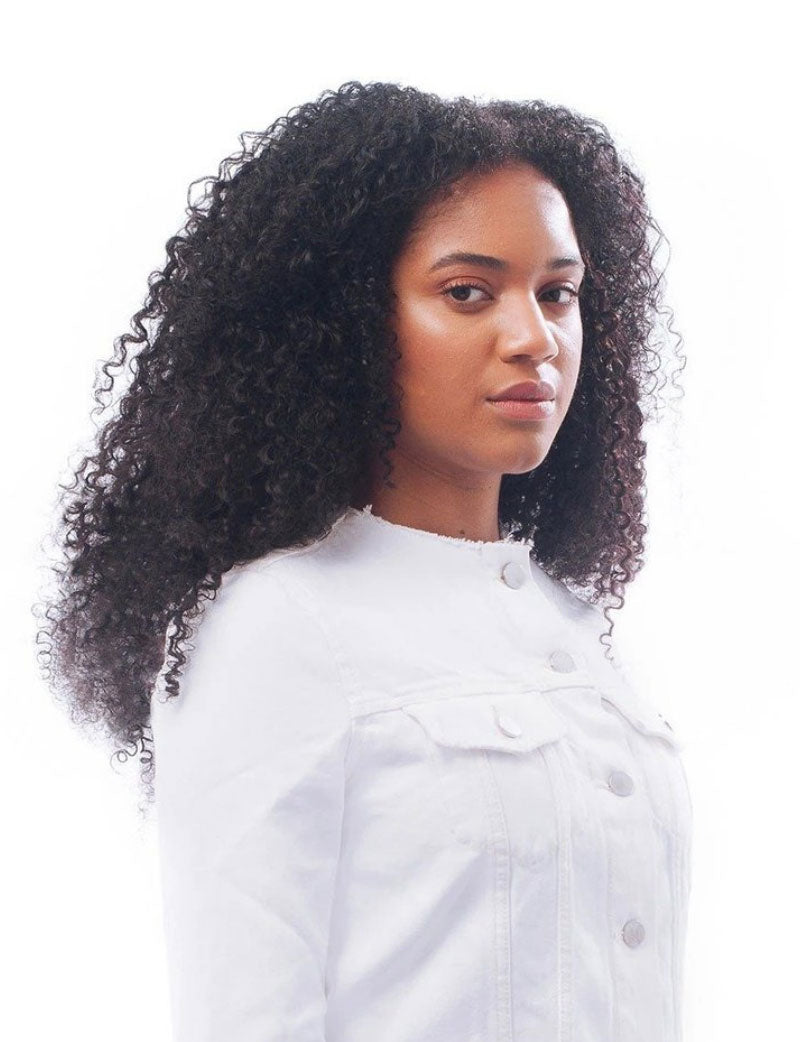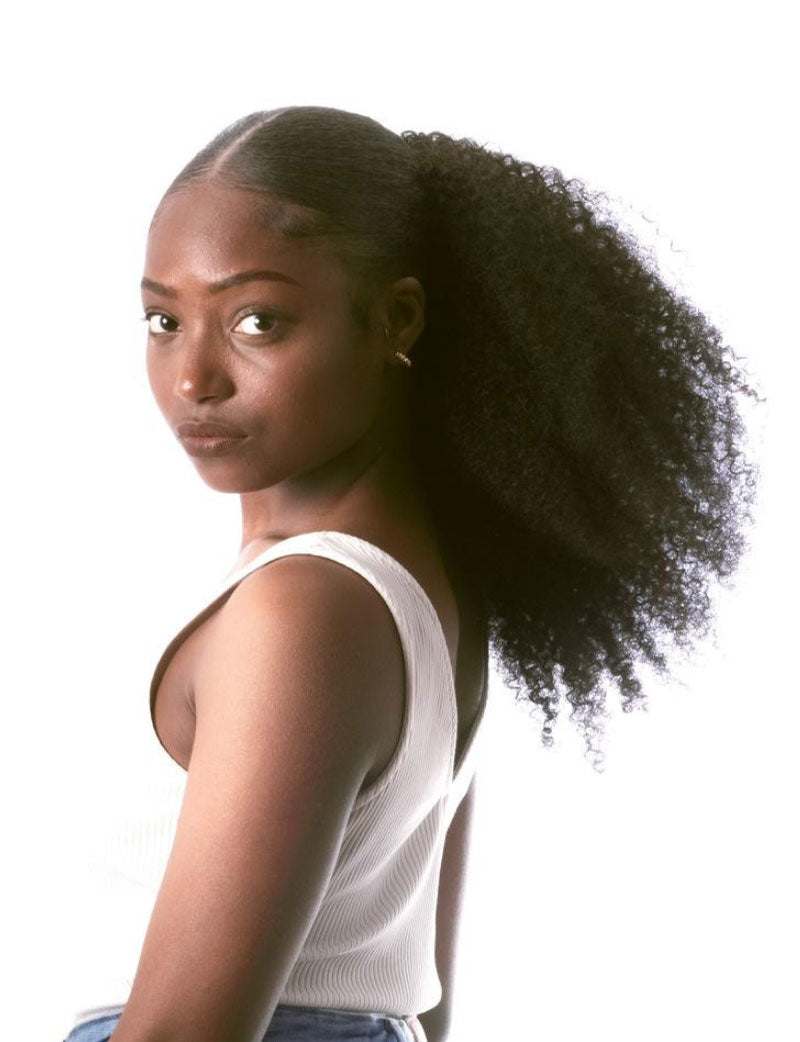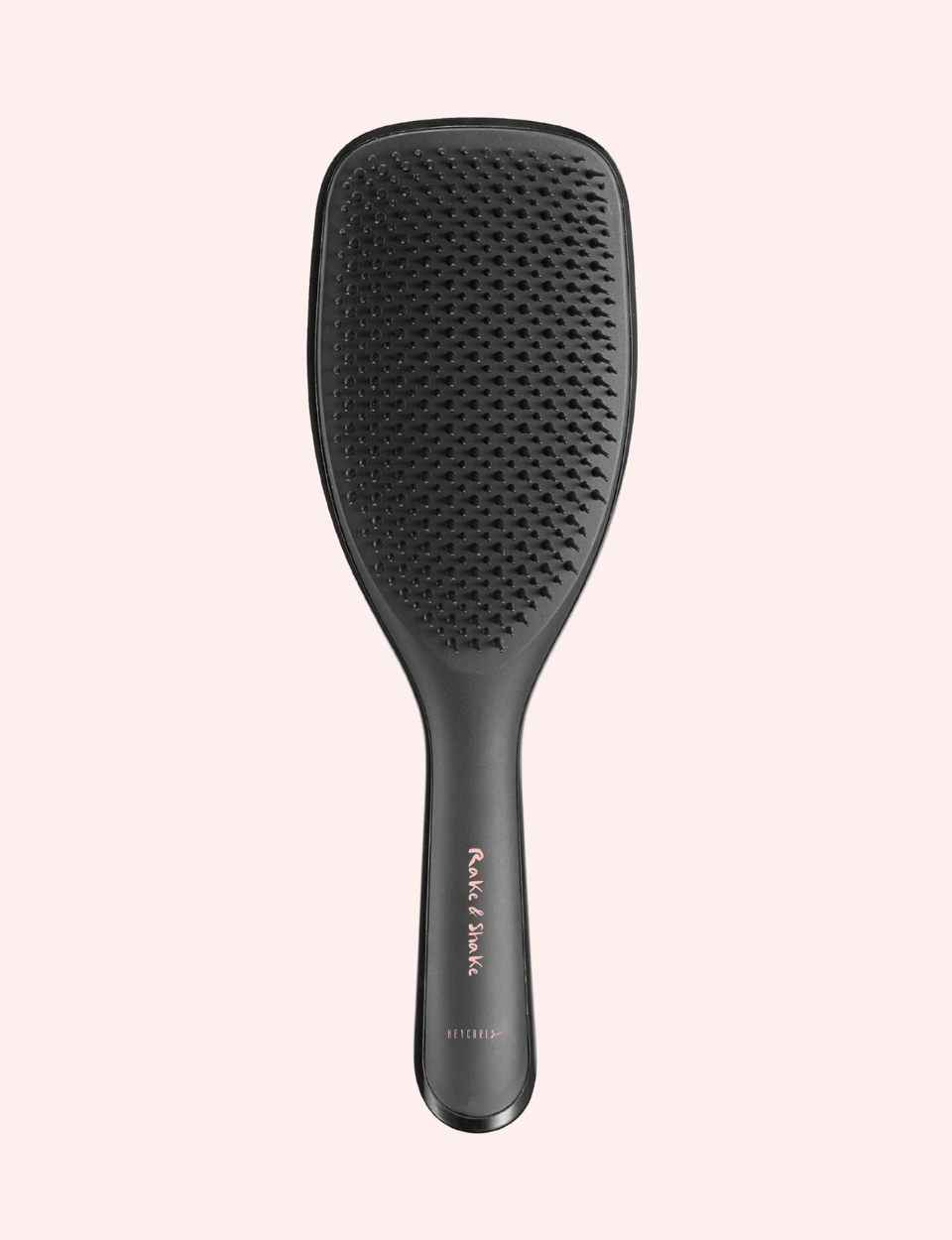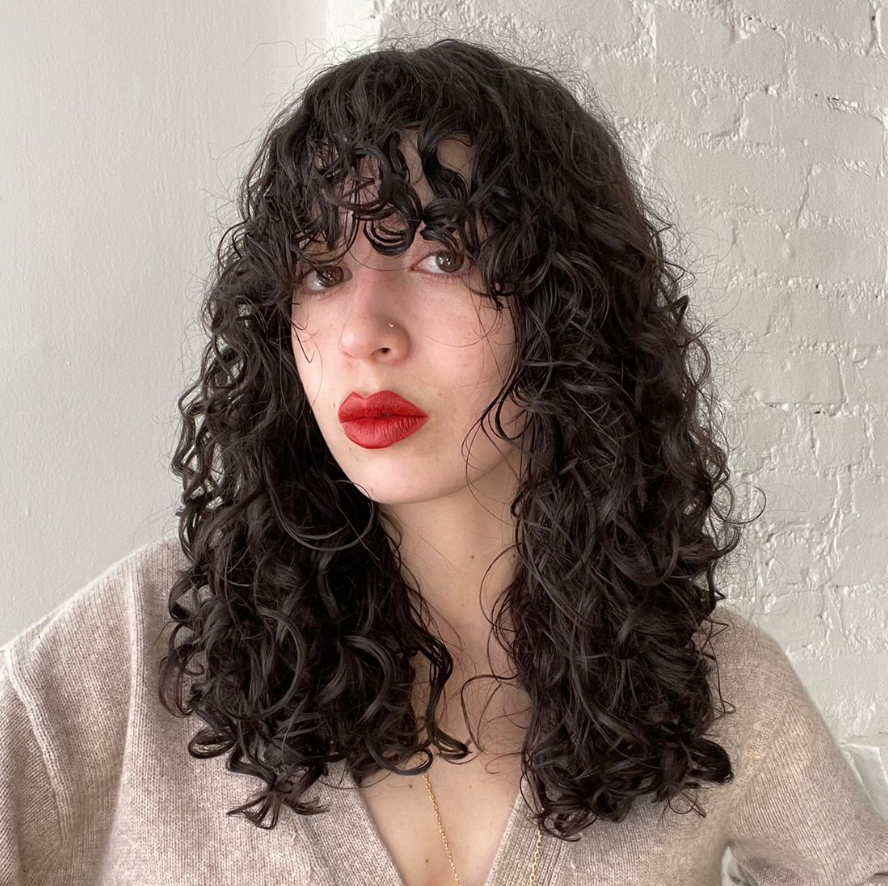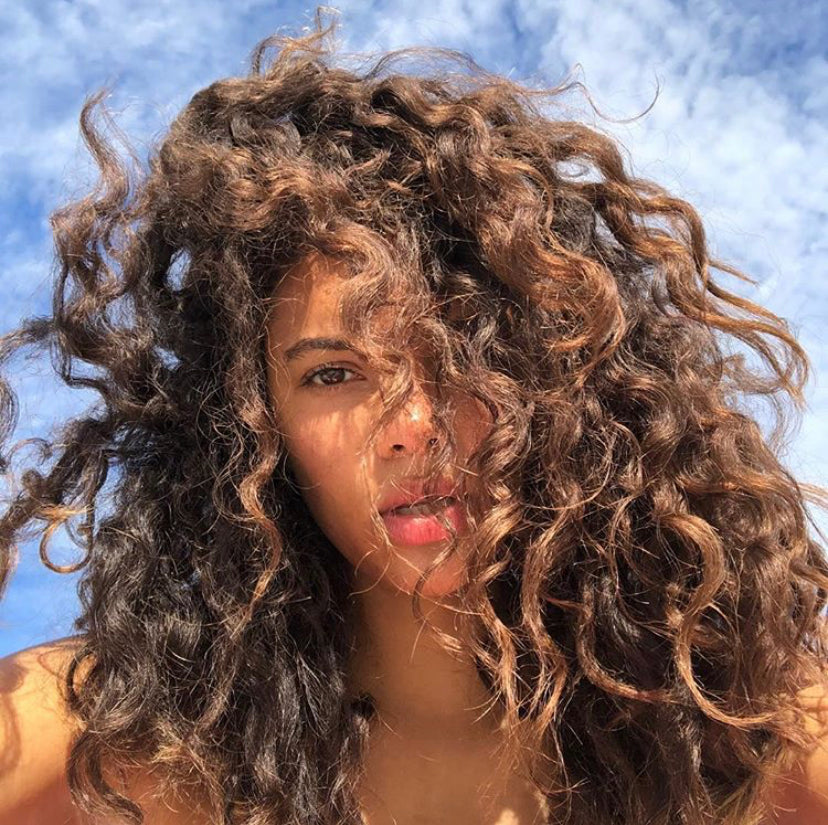Natural hair is beautiful, and comes in a variety of curl shapes and sizes. But this can also mean that classifying and caring for your hair can get frustrating, and could lead to the wrong products used for your hair type or incorrect styling methods. When talking about natural hair, you’ve likely heard the terms kinky hair, curly hair, wavy hair, s-shape and a whole host of other descriptions. If you’re confused, we don’t blame you! This article will talk about one specific and extremely popular natural hair type: coily hair.
In this article, we’ll talk about what coily hair is, how to determine if you have coily hair, as well as care and styling tips to celebrate your curls and take them to the next level.
The Andre Walker Hair Type Chart
On your natural hair journey, you’ve probably heard the terms Type 3 hair or Type 4 hair. These are classifications of curly hair types created by Oprah Winfrey’s hair stylist, Andre Walker in the 1990s. Back in the day, he created a Hair Chart to categorize different hair types and curl patterns as a marketing method for his hair product line. With time, this hair typing system has become gospel for wavies and curly girls to help them understand their hair better and embrace their natural, God-given hair. The chart classifies hair types as follows:
Type 1: Straight hair
Type 2: Wavy hair
Type 3: Curly hair
Type 4: Kinky-coily hair
Each type has sub-classifications from A-C, with each sub-classification getting curlier as you go down the list. For the purpose of this article, we’ll be focussing specifically on Type 4 hair, which is considered coily hair.
What is coily hair?
So, what exactly is coily hair? Coily hair, or afro hair, is very dry and cottony. Coily hair strands have extremely tight curls in the shape of a Z or O, with sharp angles in a zig-zag pattern. The hair texture can be anything from soft to fine or wiry, and is densely packed.

Coily hair is the driest and most fragile out of all hair textures, due to the shape of the hair strands. Because they have sharp angles, it is difficult for natural oils from the scalp to travel down the hair shaft and provide moisture. Not only that, the hair strands have the fewest cuticle layers out of all the curly hair textures, which offer little protection. This is why it’s so important to understand your hair type so you can give it the proper care it deserves.
What is the difference between curly and coily hair?
Here’s where things get a bit confusing. What makes curly hair different from coily hair? Although “curly hair” is technically considered Type 3 hair, the terms “curly” and “coily” are commonly used as an umbrella term for any Type 3 or Type 4 hair texture.
There are, however, some distinct differences between curly and coily hair: coily hair is easily distinguished from curly by being smaller, tighter and springier. While a curly hair pattern has more of a large S shape, the coily hair pattern has more of a Z shape. Sometimes, you will also see S shape coils, however, this will be much tighter compared to S shape curls.
Let’s dive a little deeper into Type 4 coily hair and its sub-classifications:
Type 4A
Type 4A hair has tight, dense, springy coils that lay on top of each other, usually in an S shape. The circumference of the coils resemble the size of a knitting or crochet needle, and hair strands are low in lustre. When the hair is dry, the hair strands can shrink.
Type 4B
Type 4B hair has tighter coils than 4A hair, usually in a Z shape and in a sharp zig zag pattern. The hair strands are coarse, wiry, and low in lustre, and definitely shrink when dry.
Type 4C
Type 4C hair is very cottony with such tight coils that you usually can’t see the curl pattern with the naked eye. The strands are often very fine and delicate and have a very low lustre. The hair strands can shrink up to 70% or more when dry.
How to care for coily hair
Now that you know all about how to classify coily hair, it’s important to also understand how to properly care for it.
As mentioned earlier, Type 4 hair is the most fragile of all textured hair types. All hair strands have an outer layer called a cuticle, which protects the inside of the hair shaft from damage. Hair strands have multiple layers of cuticles, which is also what affects the hair’s ability to absorb moisture. Coily hair tends to have the least amount of hair cuticles, and the cuticles are also raised, not flat, which is why it doesn’t have the same lustre and shine as straight hair. Because of these thin and raised cuticles, you’ll also find that coily hair tends to have more frizz and tangle very easily.
While all of this sounds like a recipe for disaster, no need to worry! With the right hair care routine, coily hair can be absolutely beautiful in its natural state.
The following tips will help you properly care for your coily hair and embrace its natural beauty.
1. Choose the right hair care products
It all starts with the right hair care products. You could follow all the rest of our tips, but if you’re using the wrong product for your hair type, you’ll continue to do more damage.
When choosing hair products, you’ll want to opt for those that are specially formulated for coily hair. Avoid products that have alcohols or sulfates, as these are extremely drying on the hair. Also avoid heavy waxes, as these coat the hair strands and follicles, making it impossible for water or moisture to penetrate them. Avoid silicones or mineral oils as well—these tend to make your hair feel nice in the moment, but actually coat your hair and cause buildup over time, suffocating hair strands and follicles.
Instead, opt for products with natural oils like argan, jojoba, or avocado, which are light and hydrating. Look for products with glycerin or honey, which are humectants and draw moisture in from the air. For heavier moisturizers, opt for shea butter or a heavier oil like castor oil (which also promotes hair growth!)

A note about hair porosity: be sure to understand your hair’s porosity as well. High porosity hair absorbs moisture well, but needs more protein, while low porosity hair has enough protein, but needs more moisture. Finding that sweet spot of protein and moisture is a game changer for coily hair types!
2. Use the LOC or LCO method
LOC stands for: Liquid, Oil, Cream. This means, when applying products to your hair after washing, this is the order in which they should be applied for maximum hydration. For example, apply a liquid, water-based, leave-in conditioner, then a hydrating oil like jojoba oil, then a hydrating curl cream.
Some opt for the LCO method instead, which means: Liquid, Cream, Oil. Experiment with both to understand what your hair likes best.
3. Spritz your hair
Coily hair needs constant hydration and moisture—this is a given. But how do you do that without washing everyday and stripping the hair strands of their already sparse natural oils? Spritzing! Simply spritz your hair with pH-balanced water on non-wash days to boost hydration. You can also do this as a quick curl refresher.

4. Use a deep conditioner
In addition to avoiding hair products and shampoos with sulfates, alcohols, and silicones, be sure to use a deep conditioner when you wash your hair. Deep conditioners are specially formulated to penetrate the hair strands more deeply than regular conditioners, moisturizing the hair from the inside out. Look for deep conditioners with ingredients like coconut milk, coconut oil, shea butter, honey, or aloe vera and leave the product in for at least 20 minutes before rinsing to get its full effect. For best results, cover your hair with a shower cap while you wait—the heat will open up the hair cuticles so the hair shaft can absorb the product even more!
5. Avoid heat exposure
Ditch the blow dryer and opt to air dry your hair instead, to decrease frizz. If you must, you can use a diffuser on the cool setting to speed up the hair drying process and define your curls.
6. Use protective styles
The best way to care for coily hair is to stop manipulating and touching it too often—just let it be! Use protective styles like small braids, box braids, bantu knots, and twist outs, to keep your hair at bay and avoid having to constantly re-style it. Just be sure that the style isn’t too tight, to refresh the protective style every 2 weeks to avoid damage or breakage, and to also give your hair a break from styling when needed.
7. Protect your hair while you sleep
Do you lay your loose hair on a cotton pillowcase at night? If so, you’re contributing to damage without even knowing it! Cotton pillowcases are notorious for sucking all the moisture right out of hair strands, and the large fibres pull and snag at fragile coily hair as you toss and turn. Instead, opt for a silk pillowcase so your coils can glide easily over the fabric—better yet, wrap your hair at night and cover it with a silk or satin bonnet.

What about kinky hair?
Kinky and coily hair are used interchangeably. Kinky hair is also considered Type 4 hair, so if you have kinky hair, all the above tips apply to you!
Hair extensions for coily hair
Because coily hair is so fragile, it is difficult to grow it out. It can take quite some time to fully understand your coily hair’s needs, and to achieve long length and full volume. Until then, try coily or kinky clip-in hair extensions, specifically designed to match coily hair textures. HeyCoils hair extensions match 3C-4A hair textures, and HeyKinks hair extensions match 4B-4C hair textures, letting you experiment with length and volume with no damage.
Do you have coily hair? Are you still confused about your hair type? Drop any questions or other tips you have in the comments below!

